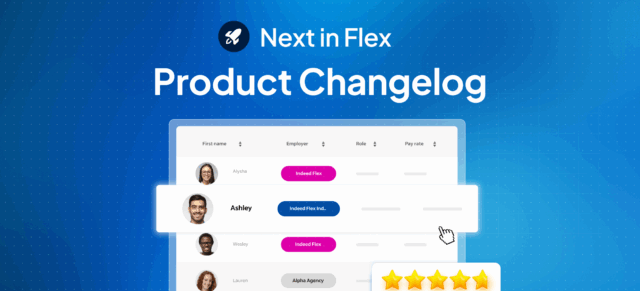
Introduction
In an increasingly competitive jobs market, organisations need to come up with new and creative ways to attract and keep talented employees in order to succeed. Focusing on key skills is becoming more and more important when it comes to finding and developing the right talent, but so is discovering those who are a good cultural fit for your company.
By using the right recruitment methods and skill evaluations, and encouraging the growth and development of individuals within their roles, businesses can not only ensure the happiness and wellbeing of their staff, but also make it far more likely that they’ll stay in the long term.
This piece looks at how to incorporate a skill-focused approach into your recruitment strategy and employee training programmes, as well as the importance of providing regular and timely feedback – acknowledging successes. This approach should see you ready to face the challenges that 2025 throws your way, and even beyond that.
Embracing a skills-focused approach to talent acquisition and retention
To build a successful team, you need to hone in on the specific skills required for each role in your organisation. It’s not about simply going through the motions, it’s about collaborating with team leaders to pinpoint the expertise and interpersonal skills that will help to deliver results. When you do this right, you’ll create job descriptions that serve as vital reference points throughout the hiring process, ensuring that candidates who are the right fit are the ones who apply.
During interviews, don’t just ask standard questions of candidates, like ‘What interests you in our company?’ and ‘Where do you see yourself in five years’ time?’ Instead, use targeted questions – about scenarios that are likely to crop up in the role they’re applying for – and real-world tasks that allow them to demonstrate their skills and strengths.
This approach does two things: it helps you find the right people for the role(s) and it sets clear expectations for performance. And clear expectations, right from the start, can make a big difference when it comes to retention rates. In fact, research shows that nearly a quarter (23%) of new hires who quit within 6 months say that clear guidelines on their responsibilities would’ve helped them stay at the job. And 69% of employees are more likely to stay with a company for 3 years if they experienced great onboarding.
Then there’s the notion about seizing career growth opportunities – or rather, enabling those already within your organisation to seize those opportunities. A staggering 94% of employees say they would stay at a company longer if it invested in their learning and development.
This could be through online learning modules, mentoring programmes, leadership training, offering certification for certain skills, or allowing staff to explore new areas, such as becoming a Mental Health First Aider (MHFA).
And retention can be further increased by looking at integrated solutions which enhance employee wellbeing. It’s been shown that healthy employees are 59% more likely to feel engaged and 53% more likely to be productive which means they’re far more likely to stay with your organisation.
All of the above is a clear indication of how focusing on skills in recruiting, looking to develop existing employees, and looking after employee wellbeing can boost a company’s overall health, talent acquisition, and retention rates.
Fostering continuous learning to enhance employee retention
To build a culture of learning in your organisation, you need to start with a good look at what’s already in place. Feedback from your team is gold. It tells you how they learn best and where the gaps are. Once you’ve got that essential information, it’s time to craft tailored development programmes. Think workshops, online courses, and mentorship — mix it up.
Next, help your people to set growth goals and arm them with the right tools. This isn’t just about throwing resources at them; it’s about making sure your training materials are up to date and effective.
And it’s well worth doing when you consider that over 22 million UK workers feel they lack the skills needed to unlock new opportunities in the next five years. That’s not just an astounding statistic; it’s a real wake-up call to businesses across the country.
And when you show genuine commitment to your team’s development, it pays off. You’ll see improved talent acquisition and retention, creating a skilled, motivated workforce that drives your company forward. Numerous studies confirm that linking development to talent strategies boosts employee satisfaction and loyalty. This isn’t just good practice; it’s a strategic advantage.

Implementing effective onboarding processes
Creating an onboarding procedure is an absolute necessity, rather than something to do for the sake of it. Think of it as setting the foundations for a skyscraper. Without a solid base, everything above it is at risk. You need a structured strategy that includes:
- A welcome pack
- An itinerary for the first few days
- Orientation meetings
- Comprehensive training sessions
- Introductions to key team members
New hires should start their journey with a clear understanding of the organisation’s mission, values, and policies. This alignment is crucial — it’s like giving them a sat nav that’ll help them to navigate their new terrain.
Then there’s the huge value provided by mentorship. The importance of having a mentor or work buddy in those early days can’t be overstated. Building connections in those first few weeks is essential for a smooth transition into a new role, regardless of seniority. Mentors provide the guidance and support that newcomers need to enable them to settle into the work environment. They can also introduce them to all of the key people they need to meet – the relevant stakeholders they’ll be working with.
Communication is key at the very beginning, and beyond. Keeping the lines open with new hires is critical to addressing their concerns and offering extra support when needed.
Now let’s look at the tech side of things:
- 52% of UK HR professionals are already using AI or seriously considering implementing it
- And 53% of HR professionals report a reduction in onboarding time when utilising AI
This isn’t just a trend; it’s a significant shift toward technology that enhances the onboarding experience.
Overall, an effective onboarding process does more than just boost employee happiness; it fosters long-term loyalty to the company. This translates into better talent acquisition, higher retention rates, and ultimately, improved performance outcomes. A strong onboarding strategy could just give your business that competitive edge in the marketplace.
Encouraging employee feedback and engagement
The importance of creating a work environment where every employee feels valued cannot be understated. You need to implement effective communication methods, so that they feel they have a voice — think surveys, open forums, and suggestion boxes. Open door policies are crucial too. When team members feel secure sharing their ideas, you suddenly have access to useful insights – perhaps about ways of working or the direction of travel of the company as a whole. Actively seeking feedback on everything from management styles to workplace culture isn’t just a good practice; it’s a necessity. Companies today are waking up to the fact that listening to their employees is more important than ever.
And so they should be, with 81% of employees who feel they have a voice in their organisation saying that they enjoy their jobs and have job satisfaction, compared to only 29% of those who feel voiceless.
There’s also a growing trend toward leveraging technology for instant feedback and establishing continuous feedback channels. This isn’t just about boosting engagement; it’s about making better leadership decisions. Staff input can shine a light on team dynamics and highlight areas that need improvement.
Take note: LinkedIn reports that organisations with wellness programmes see a 21% boost in work performance. And when you invest in conflict resolution training, you can expect a 25% increase in productivity. These numbers are clear indicators of the benefits of addressing employee issues head-on.
Once you gather feedback, don’t just file it away. Review the data and take action to resolve problems or implement recommendations. By fostering open communication, you build trust and transparency. This approach significantly enhances employee engagement and loyalty, which pays off in talent acquisition and retention. Ultimately, you’re not just creating a better workplace; you’re establishing an all-encompassing organisational culture.
Recognising and rewarding employee contributions
If you want your team to feel valued, you need a solid recognition system that celebrates both individual wins and team successes. Think of it as the fuel that keeps the engine running. Incorporate various recognition methods — commendations, awards, bonuses — and you’ll see these programmes are well worth doing. But always remember: timing matters. Quick and specific recognition can reinforce the behaviours and outcomes you want to see.
And highlighting achievements during meetings or in newsletters is also good practice.
It cultivates a culture of appreciation and recognition not just from management, but among peers. It truly makes a difference too, as companies with a recognition culture have a 31% lower voluntary turnover rate. In short, if you want to retain your staff over a longer period of time, it pays to show your appreciation for them.
Numerous studies have shown that companies with 10,000+ employees could save millions of pounds a year in turnover costs, just by adopting recognition practices that boost employee morale and add that feel-good factor to organisations.
Lastly, inclusive communication is vital. When employees feel heard and appreciated, it amplifies the effectiveness of your recognition strategies. It’s about creating an environment where everyone feels valued. That’s how you build a committed workforce for the long haul.
Conclusion
In today’s business environment, it is crucial for organisations to adopt strategies that prioritise key skills when hiring and retaining talent successfully. By evaluating the skill sets needed for each role, companies can craft job postings and interview procedures that are tailored to attract the best candidates, who are the right fit, know what’s expected of them from the start, and stay with the company in the long term. This strategic approach, aligning recruitment efforts with skill assessment, not only improves employee satisfaction but also boosts retention rates significantly.
Encouraging a culture of learning is also essential for organisations, if they’re to succeed. It’s important for companies to assess their training programmes regularly and customise them to suit the needs and preferences of their employees. Offering a variety of learning opportunities, such as workshops and mentorship shows a dedication to employee development, leading to improved retention rates and increased motivation among the workforce.
And creating a smooth onboarding experience is vital for welcoming new employees and making them feel like part of the team from the start. By implementing planned onboarding methods that involve mentoring and clear communication channels, organisations are able to improve the overall experience for new staff members and cultivate loyalty in the long run.
Finally, it’s of paramount importance to acknowledge and reward the efforts of employees, to create a strong team bond in the workplace. Implementing a recognition programme that appreciates both individual and group accomplishments can significantly boost morale and employee retention.
If looking to attract and retain the best talent out there, businesses set themselves up for success if they prioritise skills evaluation, continuous training initiatives, successful integration of new hires, engagement strategies, and strong recognition programmes.








